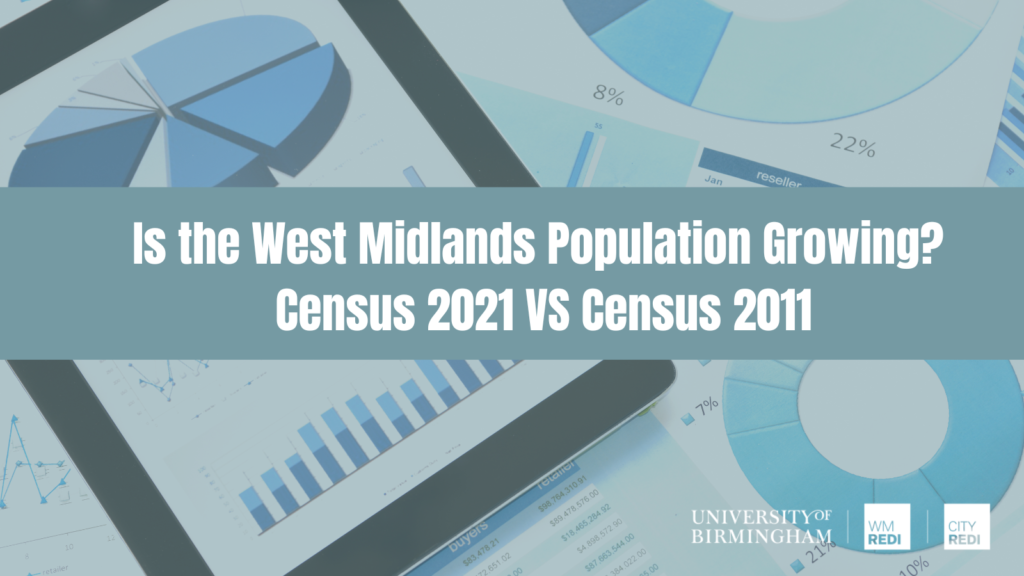
Reen Blake-Carr compares recent census data with 2011 to examine population change in the West Midlands.
The 2021 Census was released recently and revealed a population increase of 6.1%, which amounts to 24.8 million households in England and Wales, up from 23.4 million households in 2011.
Birmingham
In Birmingham, there was a population increase of 6.7% from 1,073,000 in 2011 to 1,144,900 in 2021 which is a higher overall increase than the population for England(6.6%) where the population grew by nearly 3.5 million. Nearby local authorities such as Sandwell and Bromsgrove grew by 11% and Bromsgrove grew by 5.9% with Sandwell also experiencing a population growth higher than the national average but also interestingly Solihull and Dudley experienced the smallest increase in population compared to the rest of the West Midland population increases.

The Ageing and Migratory Population in the West Midlands
The 2021 census release shows Birmingham has a median age of 34 which would suggest that Birmingham has the youngest ageing population in the West Midlands followed very closely by Wolverhampton, with a median age of 38.
This could be because both of these cities are home to universities which will see a large influx of students living in the city for the majority of the year. Birmingham is also known as a commuter city as a lot of young professionals live there as a cheaper alternative to travel to London for work.
Lichfield has a median age population of 46 which is the highest age count outside of Birmingham followed by Bromsgrove which has a median age of 45 and Dudley with a median age of 41. This highlights the migration of the older population out of the city centres to towns, creating cities with younger populations and surrounding towns with older populations.

A comparison of results from the 2011 and 2021 census shows that the average median age in Birmingham has increased from 32 to 34 over the last ten-year period.
In fact, over the last 10-year period all of the major cities in the West Midlands have experienced a median age increase of at least 1 with Wolverhampton having the highest median age of 38. This could be due to more people migrating to the West Midlands for either work reasons or to commute to London for work as they cannot afford to live in London.
Also, the towns that surround Birmingham such as Solihull, Redditch, and Bromsgrove have all experienced a slight increase from the last census in 2011.
Interestingly Walsall is the only area to suffer a decrease in the median age of residents suffering a decrease of 1 from 39 to 38 from 2011 to 2021. This could be due to a variety of different reasons as to why more people are leaving this area but seeing as the other towns are experiencing an increase in the median age it is more of a localised trend rather than it being the start of a regional trend.
Conclusion
In conclusion, there has been a significant population increase in the West Midlands over the last 10 years from the 2011 and 2021 censuses. Rugby has experienced the highest population increase as recorded by the 2021 census and Staffordshire Moorlands has experienced a population decrease, the only area to suffer as such in the West Midlands. Similar to Walsall suffering a median age decrease this might suggest that more younger people are living in Walsall and older people are less likely to migrate to this market town, unlike other market towns such as Redditch, Solihull and Dudley where there is an older population moving to these areas.
This blog was written by Reen Blake-Carr, Policy and Data Analyst, City-REDI / WMREDI, University of Birmingham.
Disclaimer:
The views expressed in this analysis post are those of the authors and not necessarily those of City-REDI / WMREDI or the University of Birmingham.
